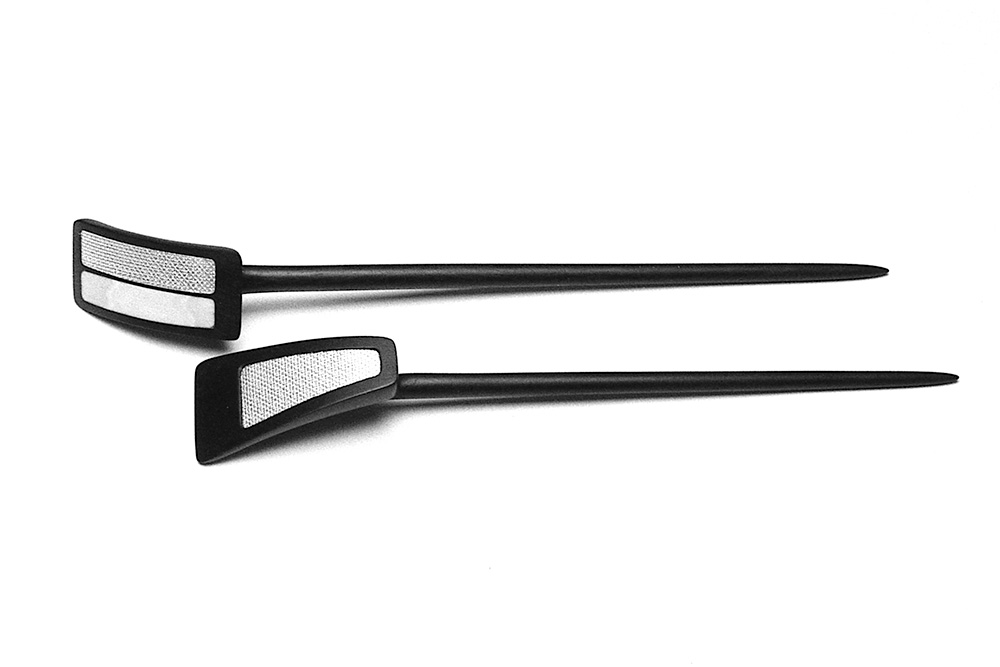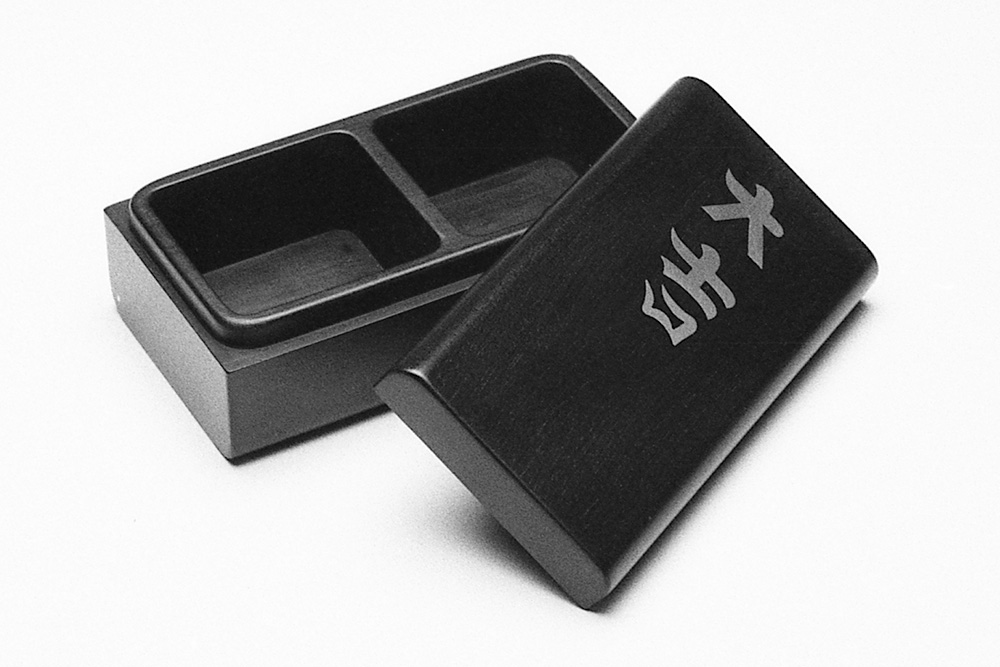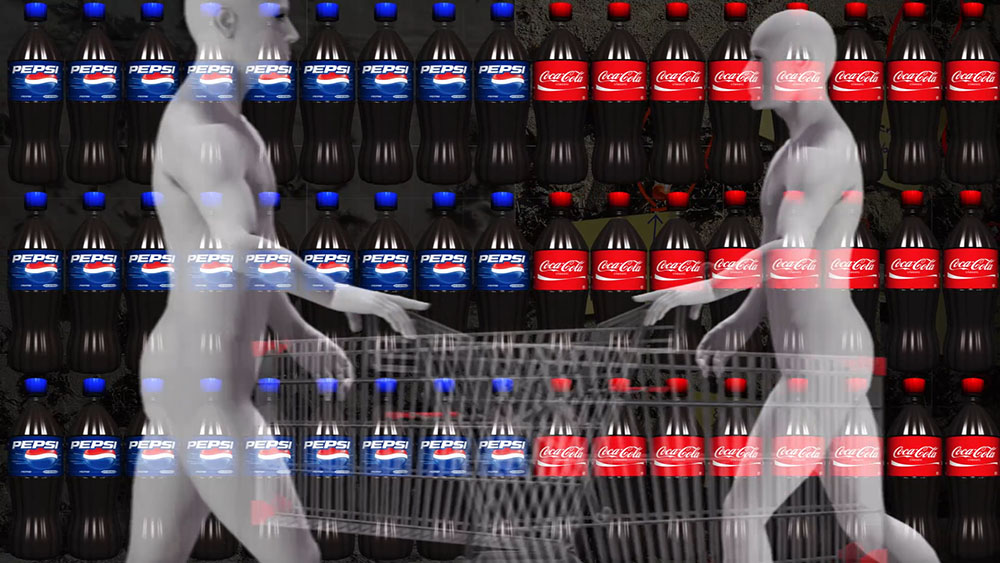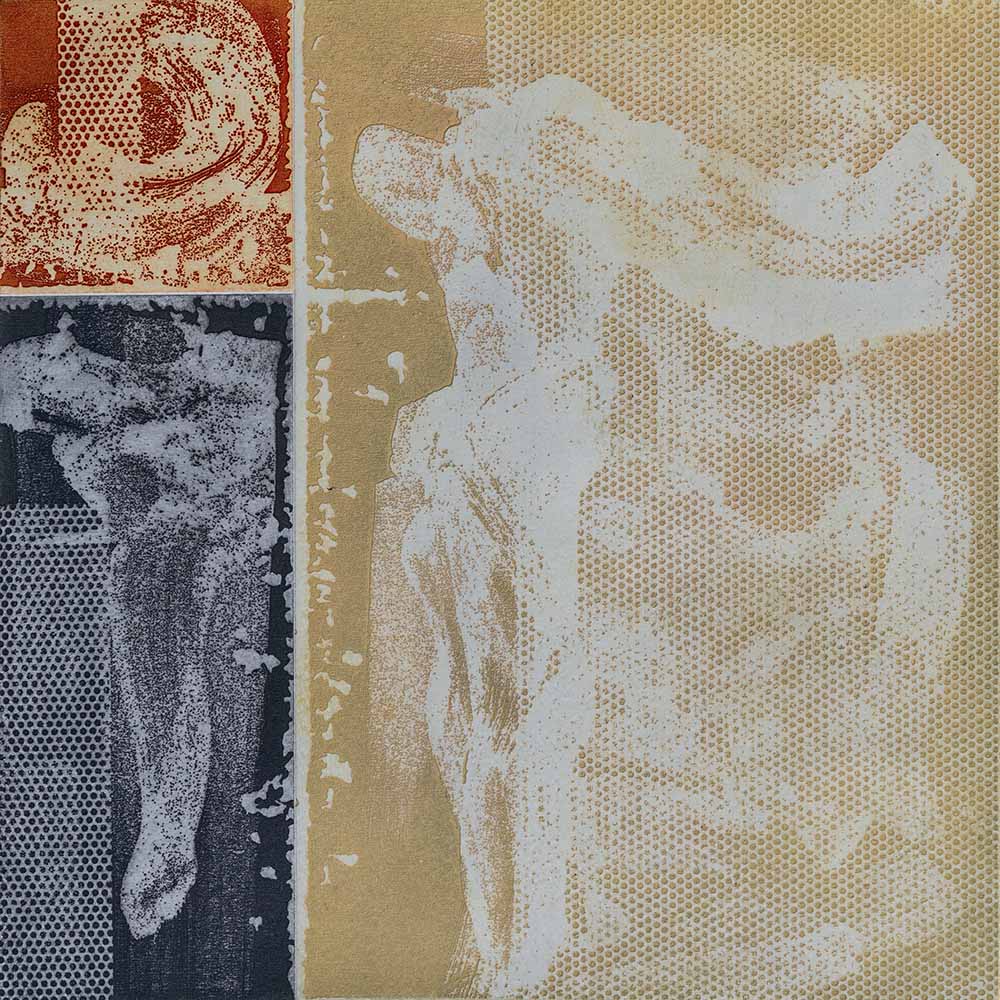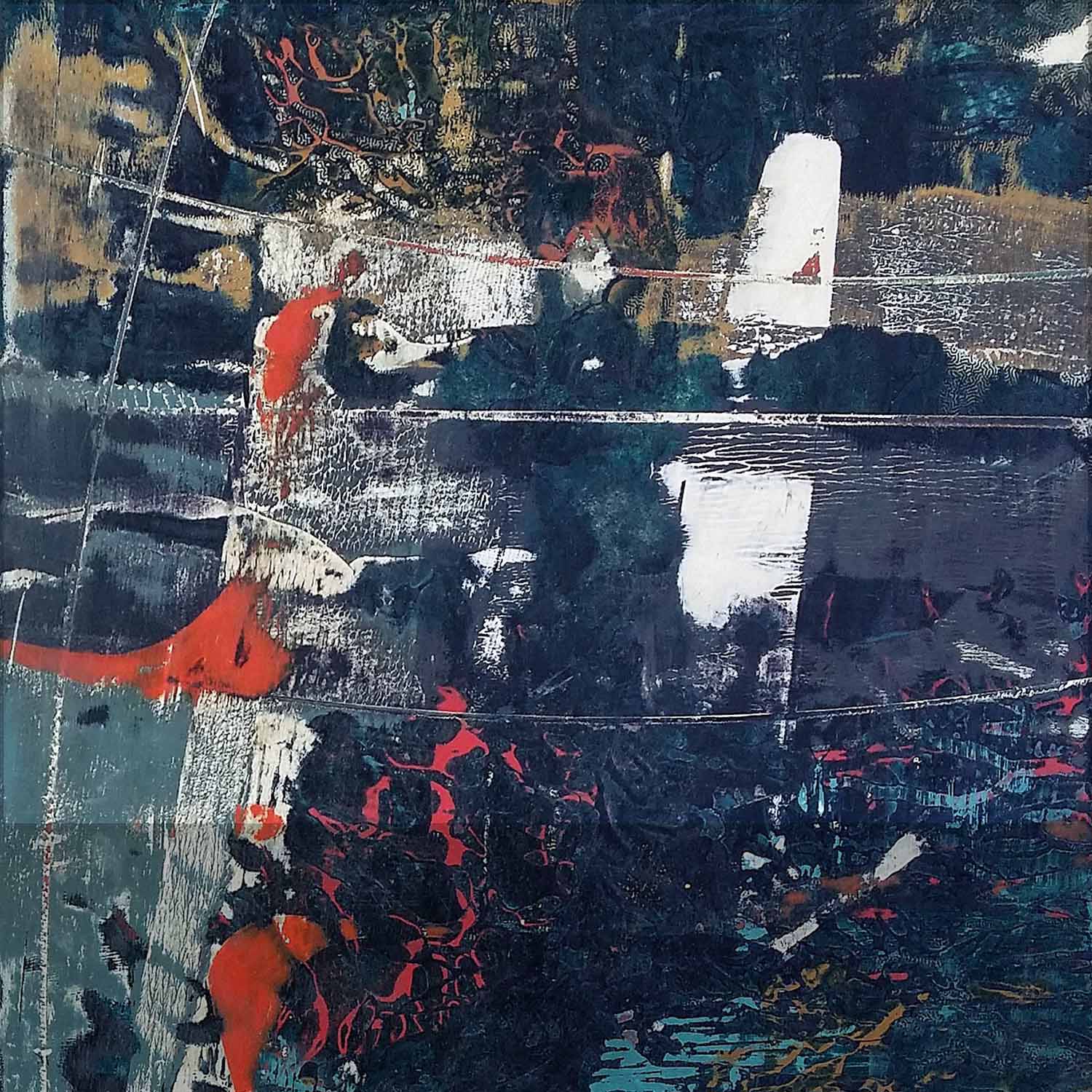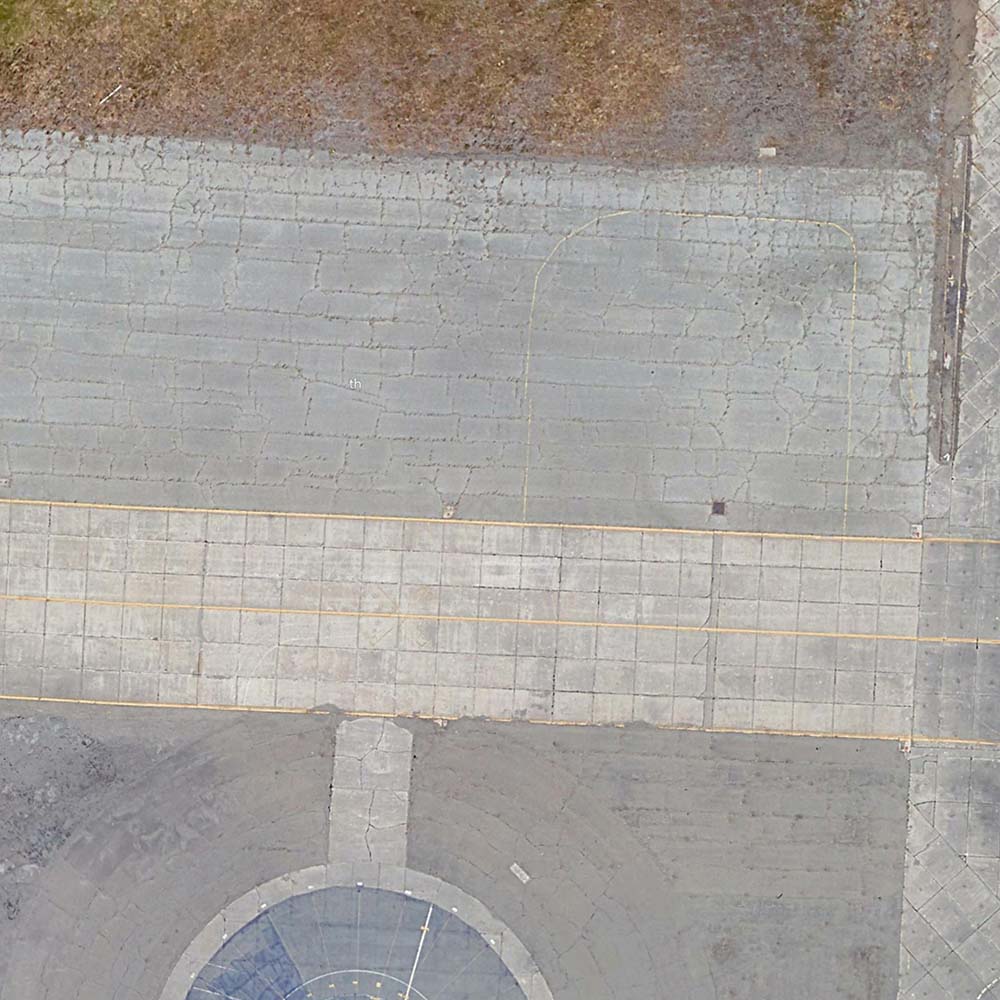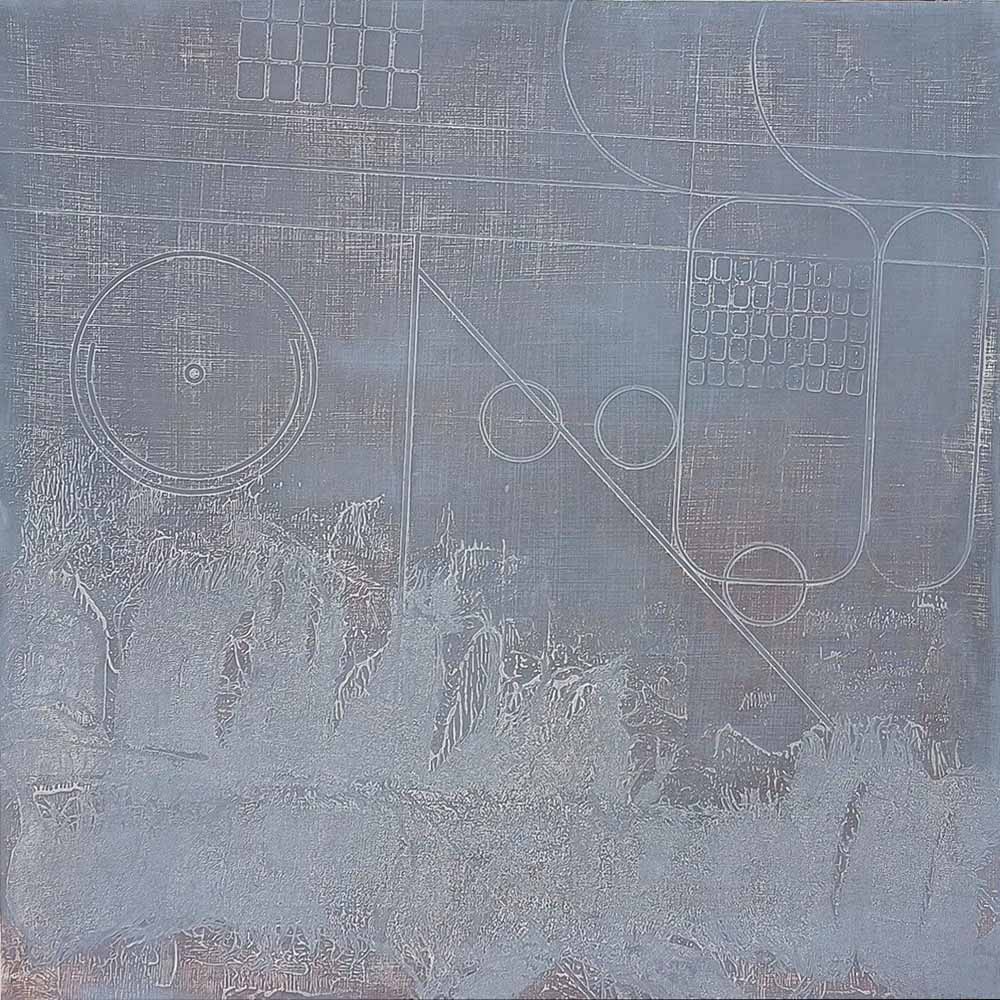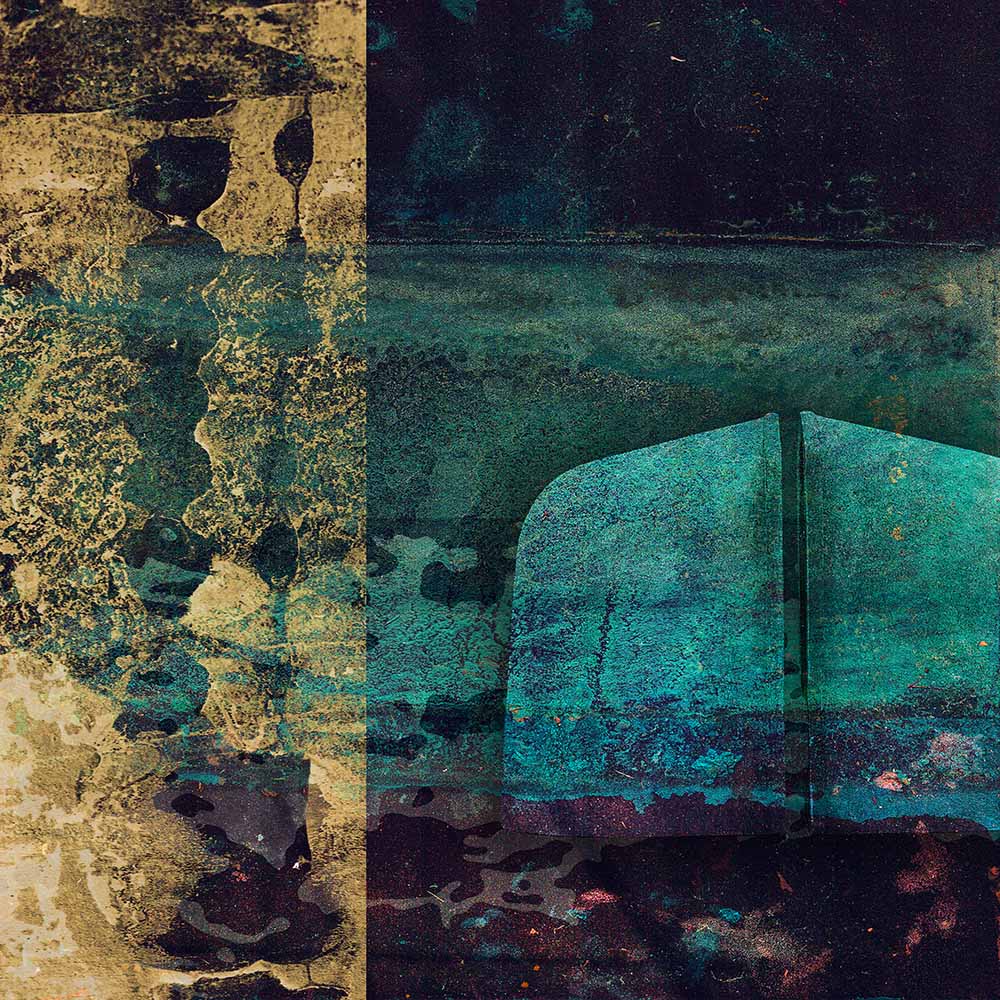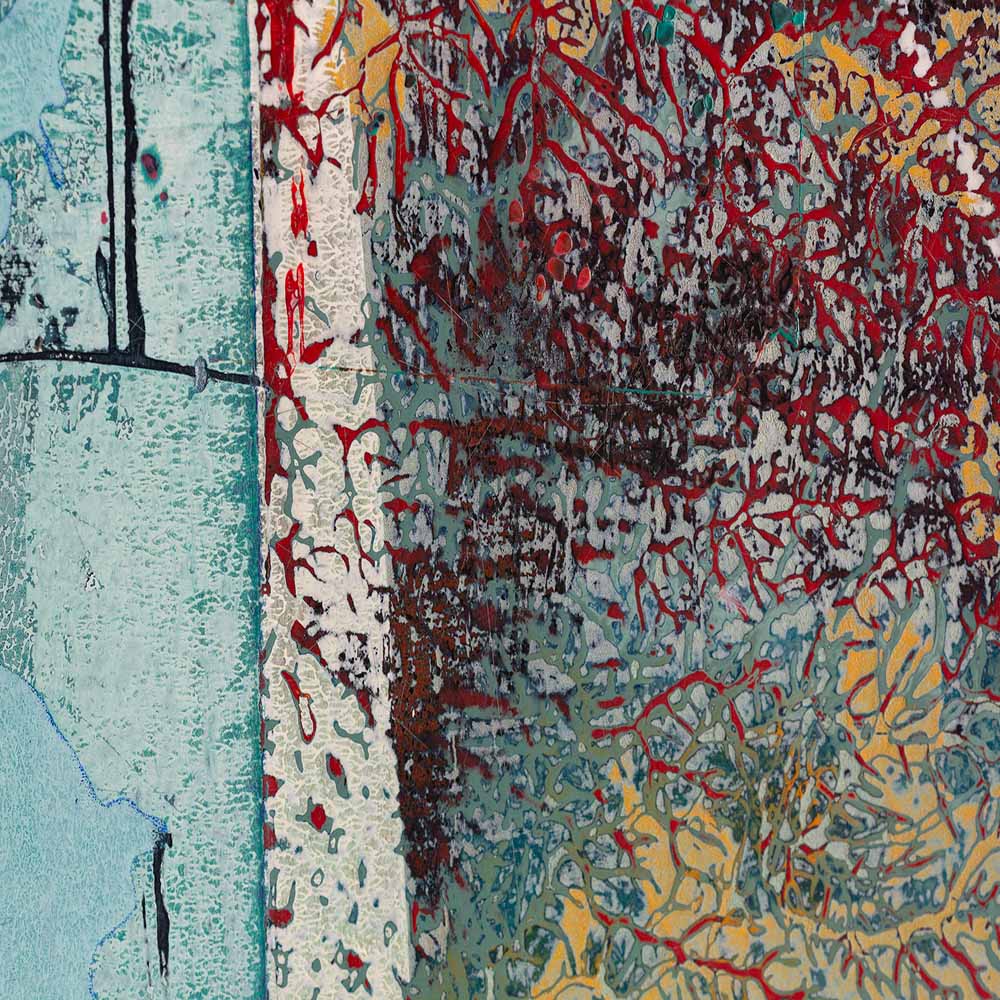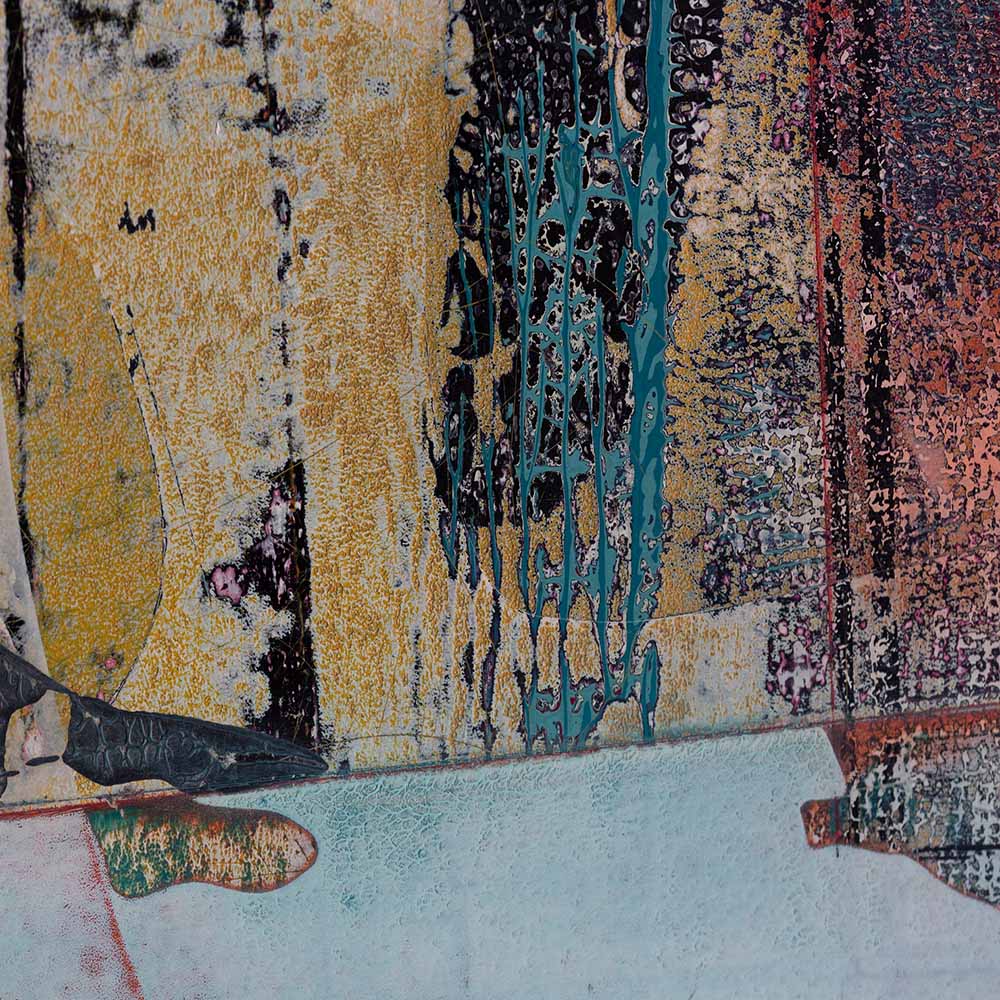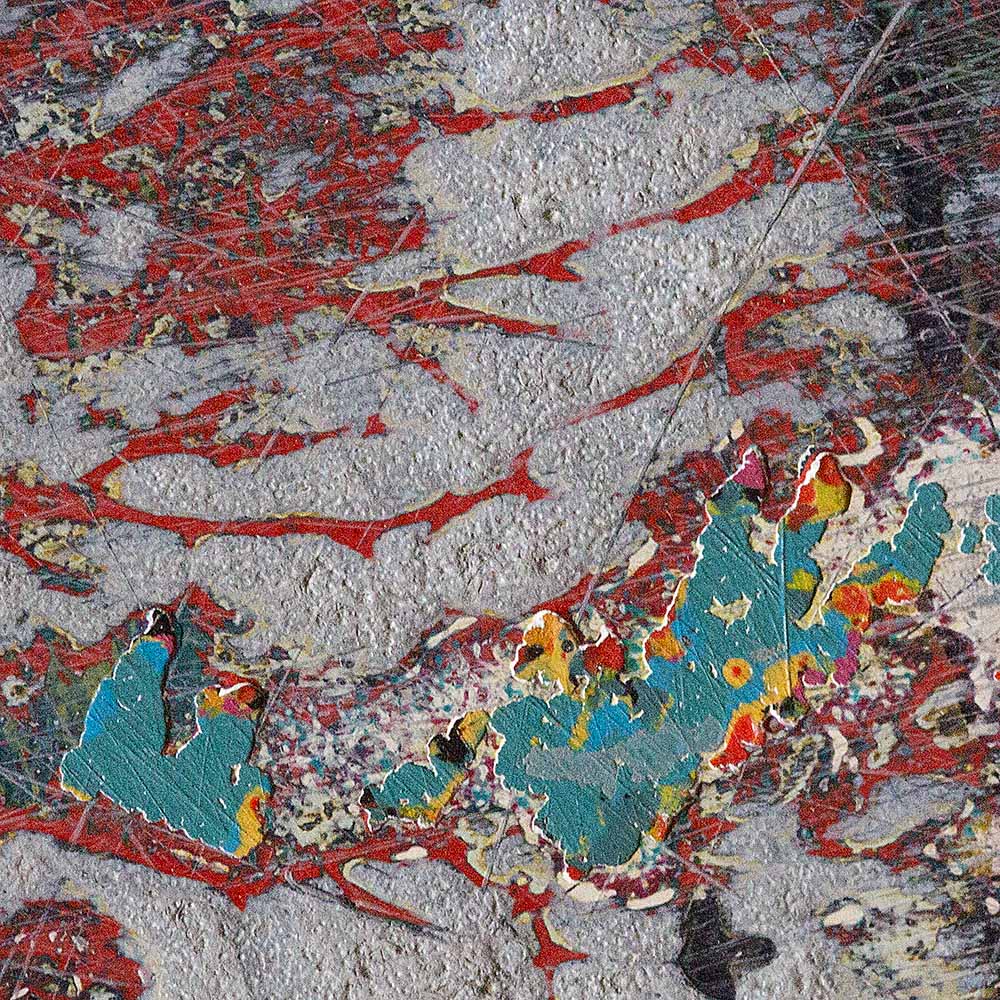Ian Harrold | Artist | Maker
Primarily a painter in oils near to the north coast of Cornwall.
Creating works which are abstract yet inspired by the landscape of Cornwall, the far South West being his adopted home of 30 years. Originally a goldsmith, after a long career in TV he is now working in the fine arts including painting, printmaking and sculpture.
His work in oils is process driven, additive episodic periods are intesrpersed with reductive sessions. layers of paint having been initially laid down quickly are then slowly removed sometimes in selected areas but more usually in a broadcast manner. In addition to the conventional attributes of colour, form and tone the physical topographical character of the surface of the work is utilized to create the final composition. Very often the original colour of the paint is lost and the texture created is used to hold another colour entirely. The layers of paint are combined by applying huge pressure to the surface and are cut back using mechanical and chemical means. Often the works are completed with a splash of white, a punctuation mark. Then perhaps an acid or alkali wash of the surface to shift the hue before final levelling to achieve a uniform finish. The series can then be 'released into the wild'.
Wash House Press | What's in a name?
A tranformative move to rural North Cornwall
Ian and Penni had lived in the city or thereabouts for 28 years, working in the world of broadcast TV throughout. As he often remarked - "I quite enjoy pedalling up the hard shoulder of the Digital Superhighway"
The couple had discovered what can only be described as a rural idyll, A grade 2* listed cottage built by Sir Edwin Lutyens in North Cornwall situated a mile from the nearest road in one of the darkest locations in England, with a wash house in the front garden to match. This of course became the workshop, previously serving the three cottages it had many of the original fittings, and all of the charm. The wash house is now equipped for painting, printmaking with an etching press which weighs nearly half a tonne plus small-scale metalwork for sculptural pieces.
Living and working close to Launceston, the ancient county town of Cornwall, the yearly Charles Causley literary festival is impossible to ignore. His poetry speaks of the place. Walking the back lanes of this forgotten corner of Cornwall one sees and hears echoes of his words;
The Seasons in North Cornwall
O Spring has set off her green fuses
Down by the Tamar today,
And careless, like tide-marks, the hedges,
Are bursting with almond and may.
Here lie I waiting for old summer,
A red face and straw-coloured hair has he:
I shall meet him on the road from Marazion
And the Mediterranean Sea.
September has flung a spray of rooks
On the sea-chart of the sky,
The tall shipmasts crack in the forest
And the banners of autumn fly
My room is a bright glass cabin,
All Cornwall thunders at my door,
And the white ships of winter lie
In the sea-roads of the moor.
The 'Iron Bound Coast' became a favourite attraction for Ian, the cliffs and coves south west of Crackington Haven have names which ring in the imagination - 'High Cliff' and 'The Strangles' spring to mind. Just a short distance away is Beeny Cliff, made famous by Thomas Hardy in his poem of the same name;
O the opal and the sapphire of that wandering western sea,
And the woman riding high above with bright hair flapping free –
The woman whom I loved so, and who loyally loved me...
It took a while for Ian to come to rest in the far south west of England. In the beginning an education at Gateway Technical Grammar School in Leicester (1966-73) laid the foundation for Ian’s work today. The school was one of the first in the country to embrace the full range of applied arts and crafts as well as fine art. Ian enjoyed all of these and thrived in this creative environment which he felt was made for him. The approach to the individual disciplines echoed very much the ethos of the English Arts and Crafts Movement, built around a skills based attitude depending on the application of 'process' in all things.
In contrast, the fine art department had at its core the principles of 'Basic Design' introduced to UK art education by Victor Pasmore, Richard Hamilton and others. This had its roots in the Ideas of William Johnstone, who in turn was infuenced by the German Bauhaus movement and in particular the ideas of Walter Gropius. Johnstone ran first Camberwell School of Art then The Central School of Art.
Gateway was a truly remarkable school. In 1970 a team built a machine for analysing fingerprints, employing the moiré principle. They won the BBC Young Scientists of the Year competition, in the UK and Europe. The schools alumni included Harold Hopkins, inventor of the surgical endoscope (how many lives?), and the zoom lens for the BBC along with the laserdisc whose technology enabled the creation of the CD and DVD.
Ian's Quaker headmaster, Maurice Bailey (father of the present Governor of the Bank of England), encouraged a keen interest in all things creative, recognizing that a students range of talents might not be only academic. This led, with the Heads direct support complimented by the (Royal College of Art alumni) silversmithing tutor Kevin Lint, to a coveted place on a four-year arts course specialising in silversmithing and jewellery at the iconic Sir John Cass School of Art in Whitechapel, London (1973–77). The course was rigorous, hard, and uncompromising yet allowed the possibility of diversions into museum drawing under the guidance of Bert Kitchen, life drawing and the use of the fine art facilities. Cass, as part of the City of London Polytechnic with its 4 year DipAd course, was developed from the course begun by Johnstone at the Central School. Ian was the winner of the George Gee Endowment Prize for Silversmithing.
Whilst at Cass, the Whitechapel Art Gallery nearby provided part-time employment under Nicholas Serota, and introduced Ian to the world of fine art, with exhibitions by Walter Pichler, Gilbert and George, and in particular British Minimalism epitomised by a major retrospective by Bob Law, who lived at Nancledra, St Ives, and was a major influence in the art scene there.







